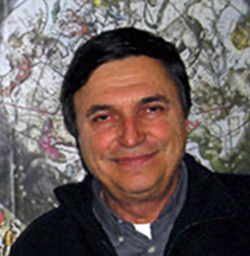

Thanks to our friend astronomer Vincenzo Zappalà the asteroid n. 13917 was named after Matteo Correggia. The asteroids orbit intersects the path of asteroid Roero n. 8075. Both these asteroids owe their name to Vincenzo, who is a long-time friend of the Correggia family and of the Roero territory.
Vincenzo Zappalà (1945)
Ordinary Professor of Astrophysics, now retired. He specialised in planetary science and, in particular, in the minor bodies of the Solar System. He was one of the “pioneers” of the physical study of asteroids in the ’70s and he particularly devoted his research to the determination of the axis of rotation and, more generally, to the collisional evolution of the main asteroid belt. He contributed to various innovative aspects of both dynamics and physics, leading to the univocal, globally recognized determination of asteroid families, at the centre of his detailed studies. He published more than 250 articles in the most recognized international journals of his area of research. He has frequently been a member, as well as a President, of Scientific Committees of International Conferences. He held numerous speeches in all major European and American research centers, as well as in Japan, India and Russia (at the Russian Academy of Sciences in Moscow). He held an advanced planetary science course at the University of Rio de Janeiro. From 1997 to 2000 he was the President of the 15 Commission of the International Astronomical Union, of which he has been a member since 1975. He was also co-leader of the working group on the Solar System of the GAIA mission. The asteroid 2813, discovered in the Lowell Observatory in Flagstaff (Arizona), was dedicated to and named after him.
He always showed a great passion for the popularisation of science, attempting to share astrophysics and its wonders with all people willing to learn, regardless of their education and age. He wrote several books about the universe.
He has recently devoted himself to an intense activity of dissemination of astrophysics through his blog “the infinite theatre of the cosmos”, which can be accessed via www.infinitoteatrodelcosmo.it.




